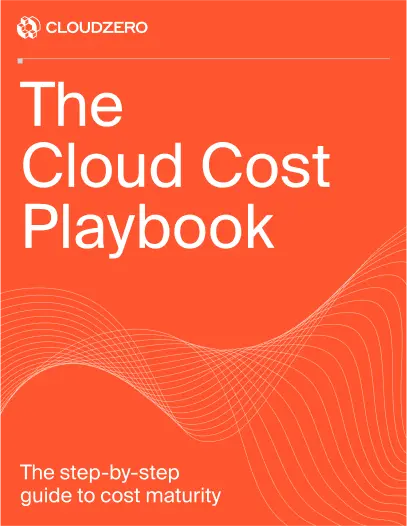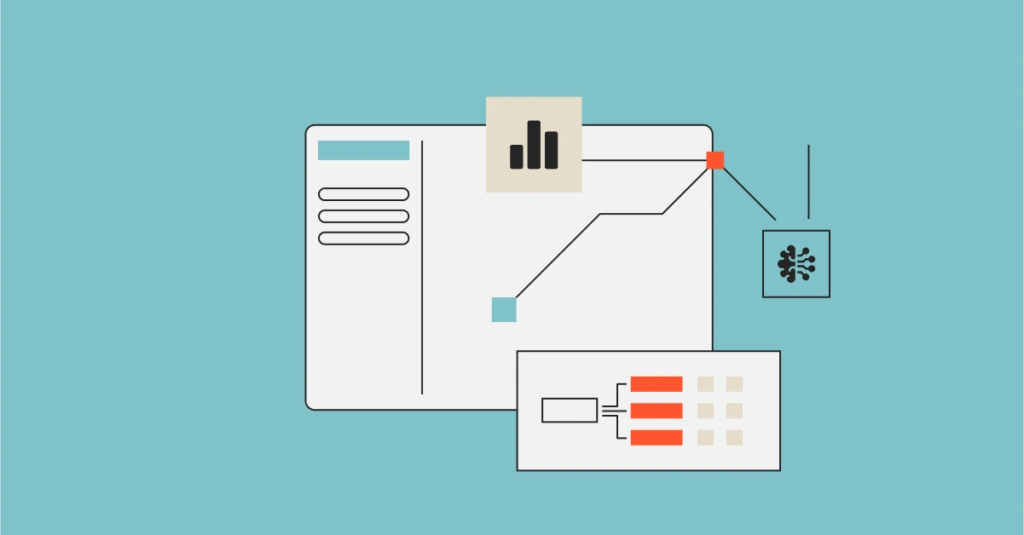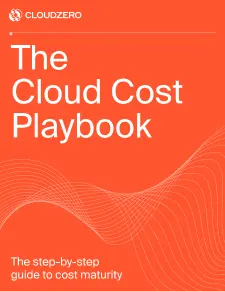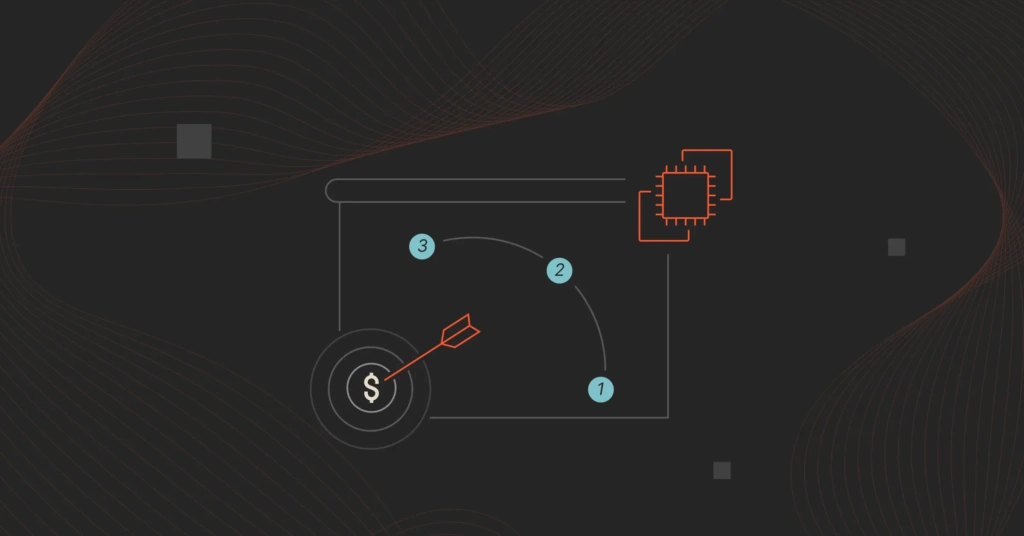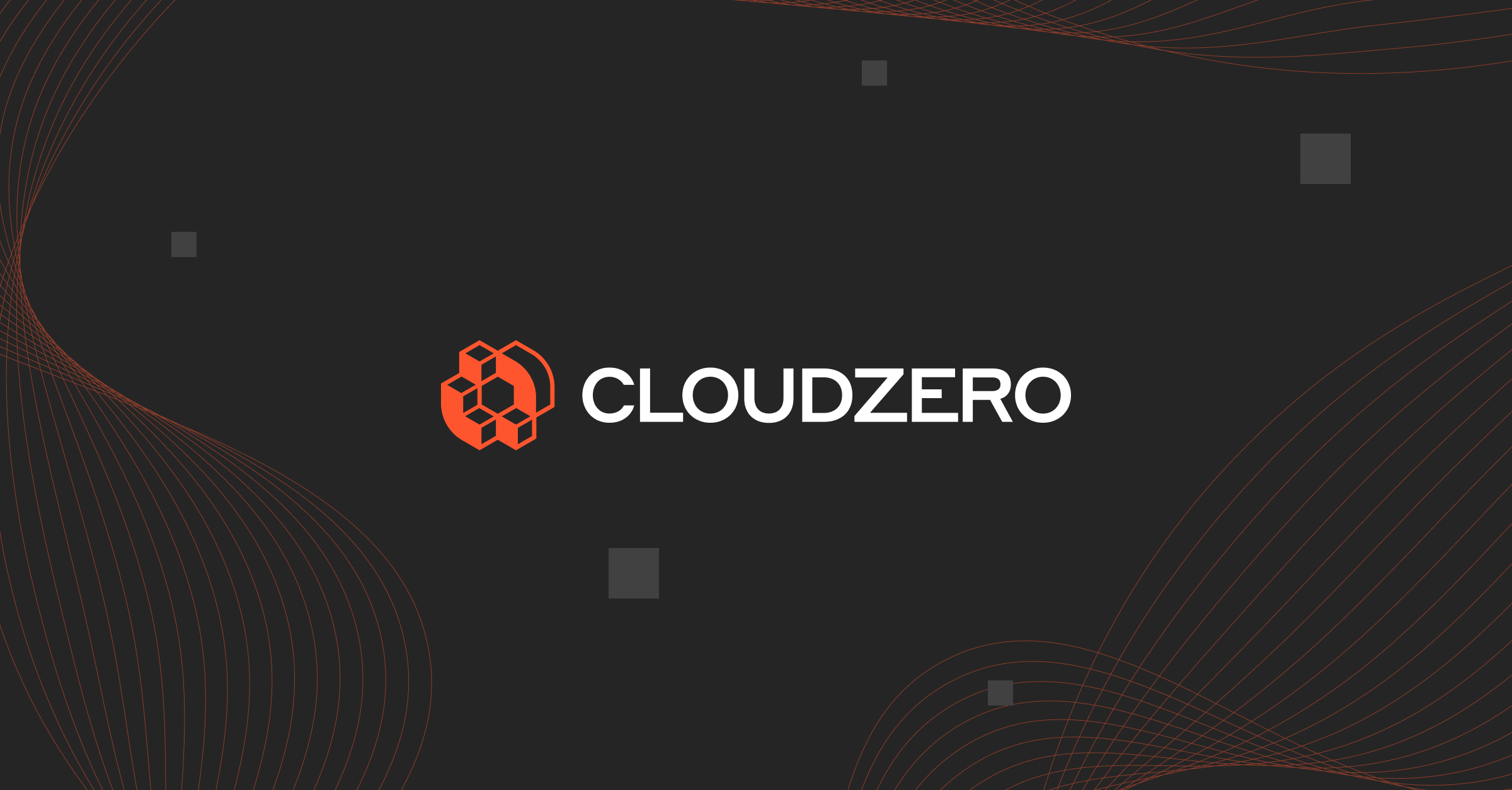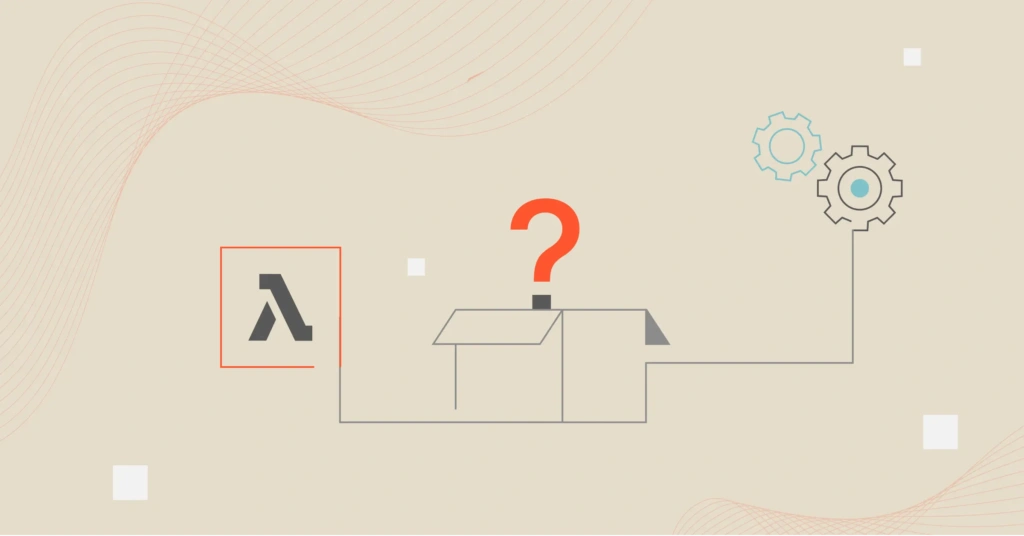At SaaS Metrics Palooza 2025, CloudZero CEO Phil Pergola delivered a keynote on the software industry’s most pressing question: can SaaS survive the AI revolution, or will AI rewrite the SaaS playbook outright?
Phil’s answer wasn’t doom and gloom, but he didn’t sugarcoat the challenges.
“Churn rates are up,” he told moderator Ray Rike of Benchmarkit on Oct. 9, 2025. “The payback from a customer acquisition cost perspective is taking longer. Net revenue retention for SaaS businesses as a trend is down.” Most SaaS investment today is concentrated on renewals — just maintaining existing business rather than expanding it.
That pressure comes at a critical moment. While cloud costs consume 6-10% of revenue for 42% of SaaS companies, only 39% have implemented formalized programs to manage these costs according to CloudZero research. That gap between spend and sophistication is about to become existential.
But, “we’re not seeing the death of SaaS,” said Phil. “Rather, SaaS as we know it is evolving.” To thrive, leaders must rethink everything they know about cost structures, margins, and value creation in a world where every AI interaction carries a real cost.
Against that backdrop, Phil argued, AI isn’t just another tech wave. It’s both the risk and the rescue. Yes, it can be expensive to adopt, but when paired with disciplined cost visibility, it can establish the efficiency and value creation today’s SaaS leaders need to survive and grow.
Watch the full video below, and read on for eight major takeaways from Phil’s presentation.

1. The End Of ‘Zero-Cost’ Software Margins
Phil began by reminding us of a simple truth: digital products used to enjoy near-zero marginal costs. There was a time where once software was built, selling it cost almost nothing because the product could be copied and sold infinitely.
But that’s changed. As Phil explained: “In the world of SaaS, there is a marginal cost because companies are hosting the infrastructure, the data, and in today’s world, the AI.”
He then traced the long arc of margin compression: 90%+ in the packaged software era, when there was “zero marginal cost for delivering the next widget”, 75–80% in SaaS’s golden age, and now, the question of whether 60–70% margins could become the new normal as AI workloads add unpredictable compute, storage, and inference costs.
Data-intensive platform companies are already operating at these levels, offering an early glimpse of where the industry may be headed.
“What we do know is that SaaS businesses need to have the confidence to invest,” said Phil. “Because otherwise, if they can’t invest in AI, if they can’t invest in data, then their businesses are significantly going to be at risk.”
“What we do know is that SaaS businesses need to have the confidence to invest,” said Phil. “Because otherwise, if they can’t invest in AI, if they can’t invest in data, then their businesses are significantly going to be at risk.”
That’s the paradox: profitability will dip before it improves. The companies that panic and pull back will risk obsolescence. The ones that lean in confidently, but intelligently, can build durable moats around data, expertise, and integration.
2. AI Is Rewriting The Cost Equation
Phil and Ray then explored the messy economics of AI. Yes, token prices are coming down, but total costs are rising. That’s AI’s false efficiency curve.
Ray asked about the unpredictability of token usage: what happens when each new version of an AI model consumes more tokens per action, even if the cost per token drops? Phil’s answer humanized the challenge:
“While the cost per token may be coming down, what’s also important is understanding how many tokens it costs to actually serve up a customer workload or a business process. You could ask generative AI to complete the same task three times, and the number of tokens that you can pack all three times, while it will be directionally similar, is not always going to be the same.”
Then came his human analogy: “In many respects, that’s not that dissimilar from a human. If you ask Phil to do something or you ask Ray to do something, it might take us a different amount of time. Phil might have good days and bad days. Some days it might take Phil a little bit longer to do a task than other days.”
That description of AI having ‘good days and bad days’ captures why GenAI breaks traditional forecasting. The same task consumes different resources every time, at variable cost, making spend volatility a boardroom concern.
3. From ‘What Did We Spend?’ To ‘Was It Worth It?’
Phil’s presentation centered on a simple but powerful concept: Cost Per [Demand Driver]. Whether it’s cost per transaction, cost per daily active user, or cost per AI lead, the approach transforms abstract spend into concrete unit economics.
Phil also stressed a need for a shift in the FinOps thought process.
“Ultimately, all this is about shifting from a model of ‘What did we spend?’, to more of a model of ‘Was it worth it?’”
Read more: Stop Asking What AI Costs, Ask If It Is Worth It
Think of it this way: traditional FinOps focused on controlling costs. New FinOps focuses on measuring outcomes. A spike in spend might indicate inefficiency — or it might signal explosive adoption of a profitable feature. Without context, you can’t tell the difference.
“We have to be very careful because the cloud and spend in the cloud is actually not the problem… You don’t want to constrain that, but you do need to make sure that the spend is healthy spend.”
“We have to be very careful because the cloud and spend in the cloud is actually not the problem… You don’t want to constrain that, but you do need to make sure that the spend is healthy spend.”
Healthy spend is value-creating spend. The goal isn’t to spend less, but rather to ensure every dollar fuels growth, innovation, or retention. Phil framed this as the heart of modern cost intelligence.
4. The Cloud Economy Is Shifting Beneath Our Feet
This shift in mindset from cost control to value measurement is happening against a backdrop of seismic market changes that make it non-optional.
Phil shared some eye-opening data points: global cloud spending is projected to reach $2 trillion by 2030, with $300 billion coming from generative AI alone (according to Goldman Sachs Research).
Phil showed how this is already a boardroom issue: ServiceNow’s stock dropped 3% after revealing their cloud infrastructure commitments in July 2025, proving Wall Street now scrutinizes cloud spend as closely as revenue growth.
“The generative AI in the cloud is actually growing at double the rate that the infrastructure was at the same period of time when AWS was just coming out with their cloud offerings.”
That growth is coming at a cost: the revenue mix is moving to other pastures. As Ray summarized, “You’re basically shifting the revenue from SaaS to PaaS and IaaS.”
For SaaS executives, this means data infrastructure is now the new moat. Companies that don’t own their data pipelines or understand their data economics will find themselves paying more for less differentiation.
5. The Two Lenses Of AI Cost Management
Phil broke AI costs into two categories: seat-based (licenses for copilots, for example) and consumption-based (tokens, compute, or data). Each requires a different optimization strategy.
“Companies should think about those two things as very distinct and different. The way I can optimize consumption is by looking at what’s driving that consumption and see what are the ways I can optimize that. That’s very different than looking at something that’s tied to my headcount.”
Beyond that, he emphasized the importance of allocation:
“You can see how much you’re spending with OpenAI, for example. But oftentimes you’re going to need to look at all of those costs and do some allocation back to what are the different things that are tied to that AI project.”
It’s no longer enough to know how much you spent on AI. Leaders must know why — and what it yielded. Visibility must be paired with traceability.
Read more: The State Of AI Costs in 2025
6. Healthy Vs. Unhealthy Spend
Phil reframed the FinOps conversation around spend health rather than spend size. Some costs, he argued, are the oxygen that keeps the business alive. So, don’t cut them. Others are inefficiencies hiding in plain sight.
“If you’re a company like Uber, and underneath the covers every time you do a ride there’s some cloud spend, then that spend is really the oxygen that helps fuel your business.”
Healthy spend drives revenue; unhealthy spend drains it. The challenge is knowing the difference and then acting on it in real time.
That’s why he argued for daily visibility, not monthly. Finance and engineering must operate on the same cadence. As Phil put it:
“The cloud providers, the data providers, and over time the AI providers, they are providing visibility into the bills on a daily basis. So there is no reason why finance teams can’t start to have visibility on more of a daily, weekly basis as opposed to something that was more monthly.”
This is how modern SaaS companies maintain agility: they treat cost monitoring like observability, not accounting.
Phil highlighted Wise as the gold standard: “They’re constantly looking at what’s happening with their transaction costs, period over period… they use benchmarking internally to look at their transaction costs through lots of different ways and see what the trends are.”
Read more: How Wise Used CloudZero To Engage 250+ Engineers In Proactive Cost Management
7. The North Star Metric: Cloud Efficiency Rate
Phil’s presentation highlighted CloudZero’s Cloud Efficiency Rate, calculated as (Revenue – Cloud Costs) / Revenue.
His data showed stark divisions: bottom performers hover around 50%, the median sits at 80%, and top quartile companies achieve 92% or better.
You want to be in that top quartile. You want to control costs, yes, but it’s more about having the margin structure to invest in AI while maintaining profitability.
8. Every Engineering Decision Is A Buying Decision
Phil also doubled down on a core insight: “Every engineering decision is a buying decision.”
He illustrated this with a stark example: “One of our customers mentioned that one of his interns had spun up $25,000 of infrastructure one day. He couldn’t get reimbursed for his $5 cup of coffee, but his intern could spin up $25,000.”
The contrast reveals how companies have fine-tuned expense management for coffee receipts but not for cloud usage.
Every line of code, every infrastructure choice, every model deployment carries a cost signature. When engineers understand that, FinOps stops being reactive and becomes part of product design itself. Hence, the link between engineering and buying decisions.
Building the AI-Era Operating Model
Phil’s narrative calls for four imperatives:
- Measure and attribute everything. “Be able to attribute that usage and costs back to the metrics that matter in your business,” Phil emphasized, whether that’s customers, features, or transactions. Peak measurement means crystal-clear visibility.
- Benchmark relentlessly. Don’t just benchmark against the top performers in the Cloud Efficiency Rate, but also against yourself. Phil again highlighted Wise as exemplary: they “constantly look at their transaction costs period over period.” The reason is to identify upward and downward trends, and distinguish anomalies from normalcies.
- Act on waste at speed. “It is not uncommon for an individual to waste tens of thousands of dollars within a few hours,” Phil warned. That can “quickly multiply to millions over the course of a year.” So, act quickly.
- Unite teams daily. As Phil noted, “The historic cadences of catching up once a month on the budget just don’t apply in this world.” Get together daily.
The AI era won’t punish high spend. It’ll punish blind spend. As Phil put it: “We want to give companies the confidence to invest.”
That confidence comes from clarity, and clarity comes from cloud unit economics. The presentation’s data suggests most companies aren’t ready. For those who are, the opportunity to build defensible moats has never been greater.
